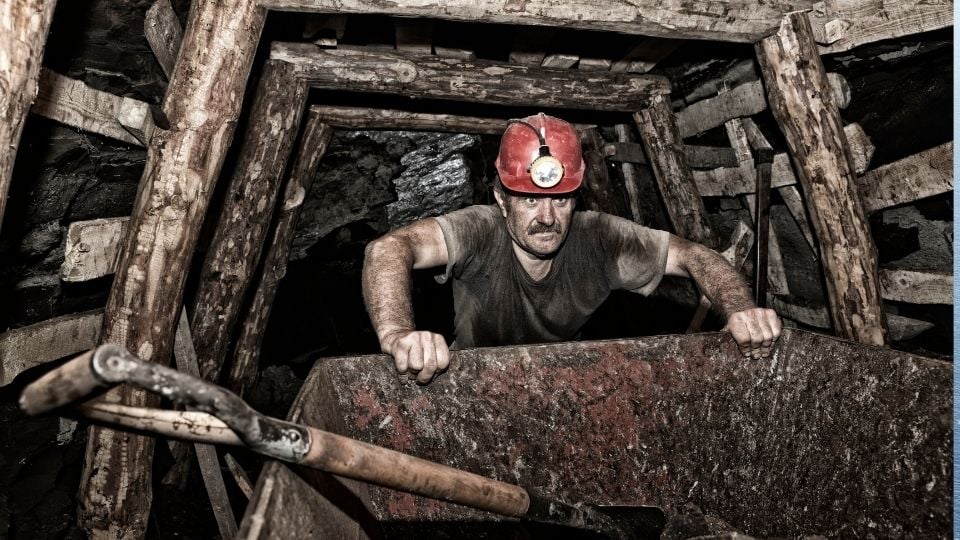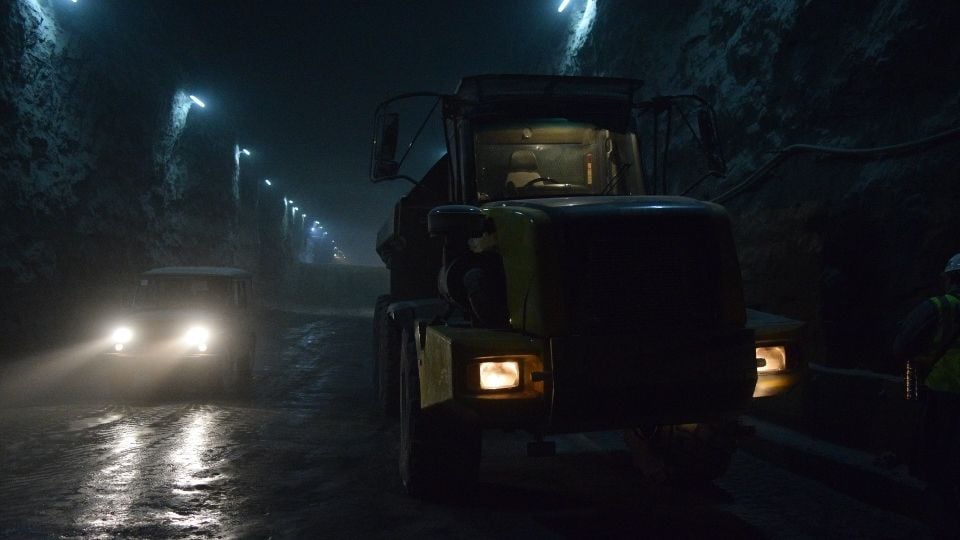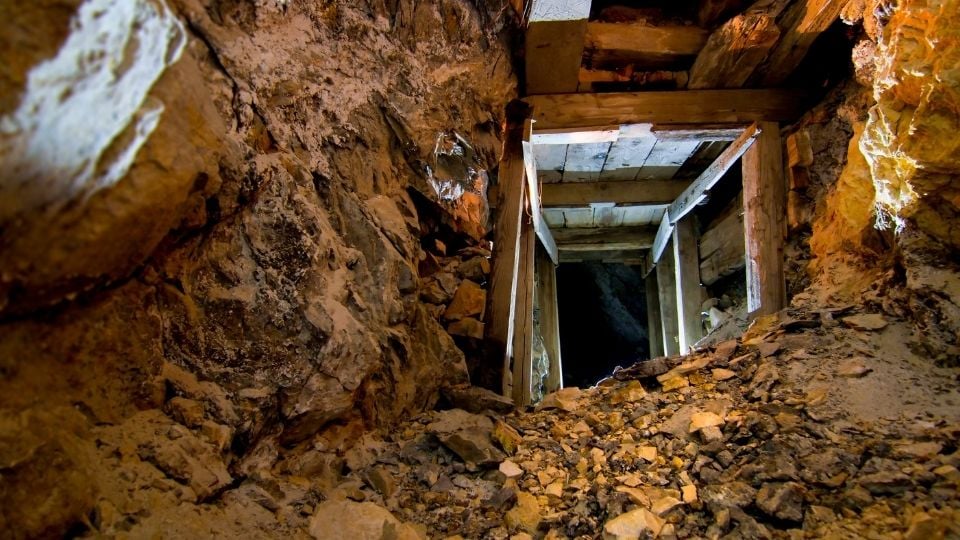Safe mining practice: 12 more tips
| Written by Geir Nerbø

No video selected
Select a video type in the sidebar.
Table of contents:
- Safe Mining Practice And Safety Legislation
- What Are The General Safe Mining Practice Aspects?
- Do You Know Those Safe Mining Practice Tips?
- Takeaway
- Glossary
Mining is a risky business: Being underground doesn't feel natural, as it is a harsh environment for humans. As a result, safety is a top priority for mining operations because the areas feature extremes in temperatures, air quality, and impacts.
Therefore, we put together another set of essential safety tips on how to reduce the risk of accidents in mines.
Safe Mining Practice and Safety Legislation
Mining is an essential industry that provides the raw materials necessary for numerous sectors of the global economy. However, extracting valuable resources from the Earth's crust poses inherent risks to the workers involved. Recognising the paramount importance of safeguarding miners' well-being, North America has implemented stringent safety regulations to ensure a secure working environment. This article delves into the safety implications of working in a mine and highlights specific safety laws in North America.
The Occupational Safety and Health Administration (OSHA), a federal agency operating under the U.S. Department of Labour, plays a pivotal role in overseeing workplace safety standards in the United States. OSHA sets and enforces regulations to protect workers in various industries, including mining. In the mining sector, specific safety regulations are implemented to address the unique hazards associated with underground and surface mining operations.
One key safety regulation in the United States is the Mine Safety and Health Act of 1977 (MSHA). The MSHA establishes comprehensive safety guidelines for mining operations, focusing on accident prevention, health hazards, and worker training. This law covers coal and non-coal mining activities, emphasising the importance of maintaining a safe work environment and preventing mine accidents.
Under the MSHA, mining companies must develop and implement mine safety and health programs tailored to their specific operations. These programs encompass risk assessments, emergency response plans, and comprehensive employee safety training. MSHA inspectors conduct regular inspections to ensure compliance with safety regulations (e.g. ATEX explained).
In Canada, mining safety regulations are primarily governed by provincial and territorial legislation, with federal oversight provided by the Canadian Centre for Occupational Health and Safety (CCOHS). The Mines Act, which varies by province, sets out the safety requirements for mining operations. It includes provisions related to ventilation, ground control, emergency preparedness, and the protection of workers from hazardous substances.
The province of Ontario, for example, has its own specific safety legislation for mining operations called the Occupational Health and Safety Act (OHSA). This act establishes the rights and responsibilities of employers, supervisors, and workers in Ontario's mining industry. OHSA emphasises the importance of proactive hazard identification, risk assessment, and implementing control measures to mitigate workplace hazards.
Furthermore, in both the United States and Canada, mining companies must provide their workers with personal protective equipment (PPE) suitable for the hazards present in their work environment. This may include items such as hard hats, safety goggles, high-visibility clothing, respiratory protection, and hearing protection. Adequate training and education programs on the proper use of PPE are essential to ensure workers' safety.
While the regulatory framework in North America is robust, the mining industry continues to face safety challenges. Employers and workers must remain vigilant and committed to implementing and adhering to safety protocols to minimise risks. Regular safety audits, incident reporting systems, and ongoing safety training are crucial to fostering a safety culture within the mining sector.
It is worth noting that safety regulations evolve over time to address emerging risks and technological advancements. Miners' safety remains a top priority, and regulatory bodies continuously work to enhance safety standards based on industry best practices and scientific research.
What are the general Safe Mining Practice Aspects?
Mining is an industry of great importance, providing the raw materials necessary for various sectors worldwide. However, it is crucial to prioritise the safety and well-being of workers in mining operations due to the inherent risks involved. This section aims to shed light on general safety aspects when working in a mine, emphasising the significance of a secure work environment.
- Comprehensive Training and Education: Thorough training and education for all workers are the foundation of a safe mining operation. Employers should ensure that employees receive extensive training on hazard identification, risk assessment, and proper equipment use. Regular refresher courses and safety drills should be conducted to reinforce knowledge and promote a safety-conscious culture.
- Adherence to Safety Protocols: Strict adherence to safety protocols is vital for the prevention of accidents and injuries. Workers must comply with established procedures and guidelines for various tasks, including the use of personal protective equipment (PPE), lockout/tagout procedures, and proper handling of machinery and tools. A culture of accountability and responsibility should be fostered, encouraging workers to prioritise safety at all times.
- Hazard Recognition and Reporting: Encouraging a proactive approach to hazard recognition is essential for maintaining a safe work environment. Miners should be trained to identify hazards such as unstable ground conditions, harmful gases, or machinery malfunctions. It is crucial to establish a reporting system where workers can promptly communicate any identified hazards or near-miss incidents, enabling swift corrective actions to be taken.
- Effective Communication: Clear and effective communication is pivotal in enhancing safety within mining operations. Employers should ensure that workers receive clear instructions and understand the potential risks associated with their tasks. Regular safety meetings and toolbox talks should be conducted to address concerns, share best practices, and facilitate open dialogue among workers (learn more about conducting toolbox talks on safety).
- Personal Protective Equipment (PPE): The provision and proper use of PPE are fundamental to protecting miners from various hazards. Miners should be equipped with appropriate PPE, including hard hats, safety goggles, gloves, high-visibility clothing, respiratory protection, and hearing protection, based on the specific hazards present in their work environment. Regular inspections of PPE should be conducted to ensure it is in good condition and replaced when necessary.
- Regular Equipment Maintenance: Regular maintenance and inspections of machinery, vehicles, and equipment are crucial for preventing accidents and breakdowns. Employers should establish maintenance schedules and ensure qualified personnel perform inspections, repairs, and replacements as needed. Workers should also be trained to identify and report any equipment defects or abnormalities promptly.
- Emergency Preparedness: Preparing for emergencies is paramount in the mining industry. Emergency response plans, evacuation procedures, and regular drills should be implemented and practised to ensure that workers know how to respond effectively in case of an emergency or evacuation. First aid kits and emergency communication systems should be readily available and regularly checked.
- Mental Health Support: The mining industry can be physically demanding and mentally challenging. Employers should prioritise the mental health and well-being of workers by providing resources and support. This may include access to counselling services, stress management programs, and promoting a supportive work environment that encourages work-life balance.
Promoting a safety culture within the mining industry requires a collective effort from employers, employees, and regulatory bodies. By implementing these practical safety tips, mining operations can significantly reduce the risks associated with the industry, ensuring the well-being of workers and fostering a secure work environment.
Do you know those Safe Mining Practice Tips?
Ventilate toxic gases
As noxious vapours naturally happen in mines, workers can inhale these and suffer from poisoning. In addition, high concentrations of particular gases can collect, and in some instances, they can combust.
Effective ventilation systems can divert the gases and enhance airflow. More air dilutes the gases to an acceptable and breathable proportion for suitable air quality.
Knowing the signs of gas poisoning can allow you to catch a leak before it harms anyone. For instance, overexposure to carbon monoxide can cause headaches and breathlessness. In addition, gas detection devices bring more dependable monitoring.
Interested in how to improve underground mining safety? Read here...

Take lifting precautions
Mining is demanding work, and strenuous activity can result in uncomfortable stress. Especially performing in confined spaces can require unusual positioning, and awkward stances and motions can cause injuries.
Lifting is a significant activity for miners, but doing so in an extended position can make lifting even more difficult. In addition, lifting large amounts of weight and objects can put pressure on the back and neck, hampering workflow. It's also wise to ask for assistance from fellow miners to pick up bulky loads.
Account for extreme temperatures
The spectrum of temperatures that miners spend time in can inflict stress on the body. For example, gold, diamond and coal mines can drop to negative temperatures, while deep mines closer to the Earth's core can climb to hot conditions.
Long work hours in an intense setting can fatigue miners, leading to heat exhaustion and dizziness. Freezing areas can also impact workers with cold-related illnesses, like lack of coordination and irregular breathing. These kinds of impairments in workforce members could affect the well-being of others if they don't carry out their duties.
Hydration, sufficient coverings and periodic pauses from these conditions can lessen the risk of cold or heat stress.
Handle noise levels
Controlled detonations in quarrying resonate through the earth and produce loud sounds, and potent mining machinery also adds vibration and noise. An explosion can produce noise levels as high as 160 dB, while the sound generated by continuous mining machines operating underground typically ranges between 90 and 95 dB. In addition, blast mats can absorb the energy from the discharge and help contain strong gas emissions (Related: blast mitigation techniques). (1)
Strategic drilling can reduce tremors, especially in procedures where buffer holes are inserted in advance.

Prepare for the chance of slips and falls
Miners repeatedly stumble or fall from high places, and people can travel down meters onto hard surfaces due to long shafts.
Workers can also slip on liquid, mud or loose rock while walking, but high-traction footwear can give you a better stance on uneven ground. Sizable work boots might affect your gait, but they can keep you upright.
Another possibility is toppling off ladders, and ladder-securing equipment could solve it. For example, underground mining uses fixed ladders, and safety belts and lines can draw workers back if they slip on far-reaching shafts.
Shut down old shafts
Shafts that are out of commission yet not shut down can eventually cause problems. Mines need maintenance and reinforcement to uphold their structure, and without supervision, the unused shafts deteriorate.
They can act unpredictably and tumble, affecting neighbouring shafts. Gas collection can also increase the risk of explosions.
Securing deserted shafts can keep the framework, and a reliable sealing method can prevent gas from entering the mine's used passages.
Implement Rock Burst Prevention Measures
Environmental changes and human-made detonations can move rocks and dislodge large pieces from rock walls. Falling rocks can hit workers and induce serious injuries, so setting up protection systems is advantageous. For example, fastening anchors and barriers in vulnerable areas can hold back fragments to protect miners.
Stay aware of fire risks
The materials in mines raise the chance of fire, and if you're mining coal or working in a gas-rich region, this heightens your risk for disastrous scenarios.
Because underground shafts and tunnels are tightly enclosed, smoke and flames can quickly become overwhelming. The compact tracks can also provoke the spread of fires.
Fire suppression devices can fight the flames, and sensors can caution workers about danger. Remaining vigilant to fire stimulants and treacherous conditions can ready workers to respond to the initial moments of the fire. Wearing fire-resistant protective gear can reduce the degree of burns, too.
Electrical safety
Electrical cords and electronics in damp mines can raise the risk of electrocution or electric shock, but preserving electrical safety can protect workers from the hazard. Grounding the system, incorporating resilient cords, and protecting the connections can help manage the currents.
Bundling the cords to prevent tangling and moving them out of walkways to avoid tripping is good.
Consider the potential for cave-ins
Cave-ins have been dominant in mining operations for years and can be fatal. Weighing the probability of collapses in different scenarios can raise awareness in mining crews.
While cave-ins can happen without notice, workers can methodically complete their tasks without cutting corners. In addition, compliance with mining regulations and attentiveness can keep workers from getting trapped.
Miner tracking technology can also enhance safety and strengthen subsurface structures. Devices that pinpoint liabilities early can help crews deal with risks immediately.
Emphasize communication
Relaying information about the situations and progress of mining activities is vital. Lines of communication should be handy so workers can warn others about suspicious areas or mishaps as soon as possible.
Signs designating hazardous areas can visually convey safe zones, and clear labels can tell workers how or when to use their equipment and tools.
Further reading: Mine Safety - Why digital management?
Take advantage of professional training
After understanding the routine, workers can feel comfortable in their positions, but they can also forget essential procedures. Their caution can wane as they settle into the routine. Reminders about the rules from supervisors and coworkers can create a sense of responsibility. Refresher training courses can also help you go through the process with confidence.

Takeaway
Working in a mine is inherently risky due to its harsh underground environment and its unique challenges. Safety is paramount in mining operations, and North America has implemented strict safety regulations to protect miners. The Occupational Safety and Health Administration (OSHA) in the United States and provincial legislation in Canada oversee mining safety standards. Critical safety practices include comprehensive training and education, adherence to safety protocols, hazard recognition and reporting, effective communication, proper use of personal protective equipment (PPE), regular equipment maintenance, emergency preparedness, and support for mental health. By implementing these safety measures and staying updated on evolving regulations, mining operations can reduce the risk of accidents and prioritise the well-being of workers.
Dive into one of our core topics: Mining Safety
Glossary
Mine Gas is any of the various noxious gases produced during mining operations. The gases are often referred to as damps (German Dampf, "vapour"). Firedamp is a gas that occurs naturally in coal seams. The gas is almost always methane (CH4) and is highly flammable and explosive when present in the air in a proportion of 5 to 14 per cent. White damp, or carbon monoxide (CO), is a particularly toxic gas; as little as 0.1 per cent can cause death within a few minutes. It is a product of the incomplete combustion of carbon and is formed in coal mines chiefly by the oxidation of coal, particularly in those mines where spontaneous combustion occurs. Black damp: An atmosphere in which a flame lamp will not burn, usually because of an excess of carbon dioxide (CO2) and nitrogen in the air. Stinkdamp: A name given by miners to hydrogen sulfide (H2S) due to its characteristic smell of rotten eggs. Afterdamp: The mixture of gases found in a mine after an explosion or fire. (4)
Sources:
(1) https://www.tmi2001.com/blog/safe-mining-practices/
(2) https://www.msha.gov/safety-and-health/safety-and-health-materials/safety-topics
(3) https://minetek.com/en-au/resource-hub/news/noise-pollution/
(4) https://www.britannica.com/technology/mine-gas
Note: This article was updated on the 5th of August 2025. This article was partly created with the assistance of artificial intelligence to support drafting. Some images were generated by AI.

Author
Geir Nerbø, VP Sales Safe Mining
Geir has been an advocate for safety in the mining industry for a long time. Geir's background is from the Norwegian army, working as a technician within communication systems, special educated as a system engineer for the Norwegian Field Artillery, with responsibilities for the system calculating the ballistics data. He added a bachelor in Computer science (University of Agder) and started a career in sales, where the last 14 years he spent at IDENTEC SOLUTIONS.







